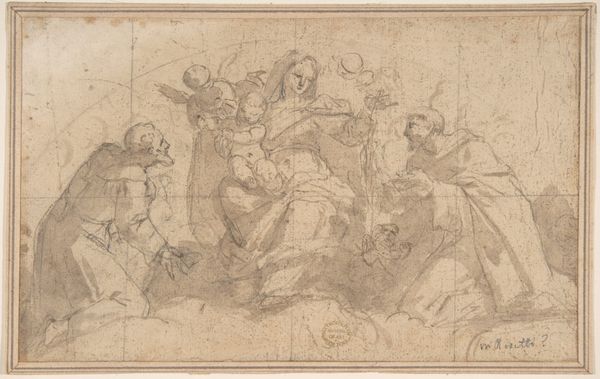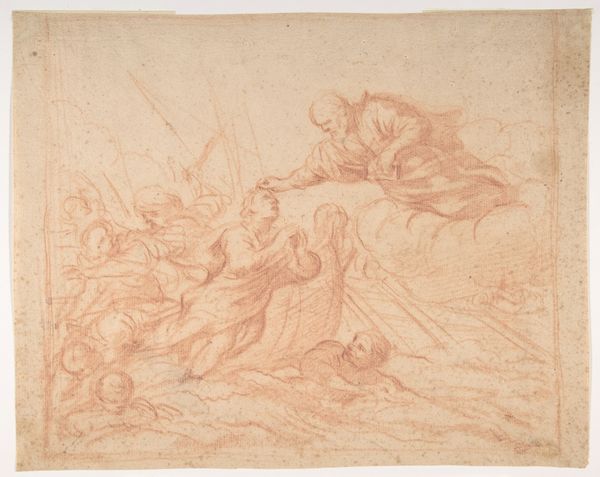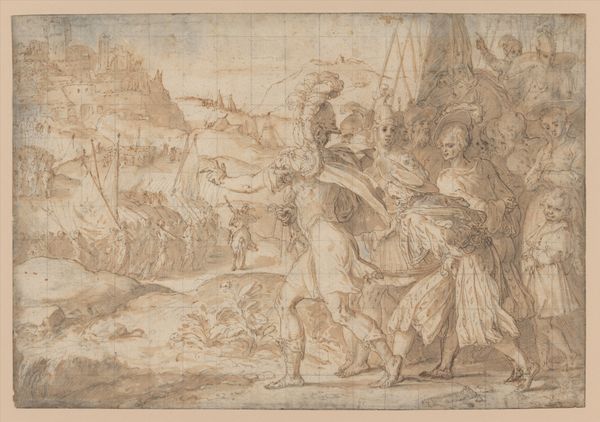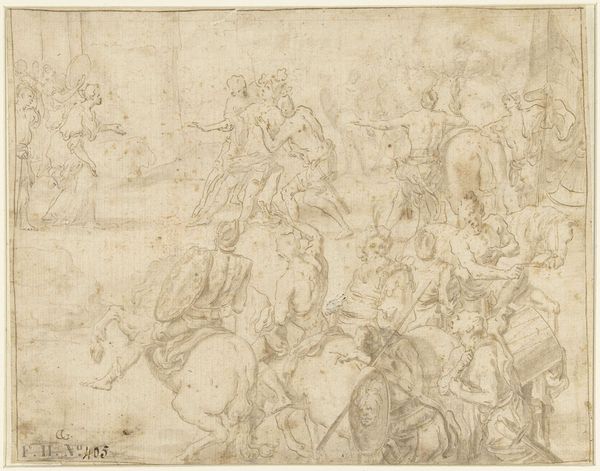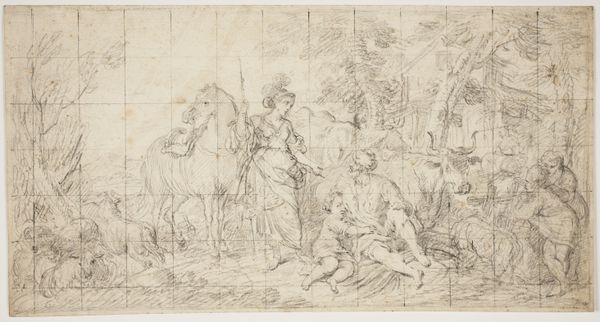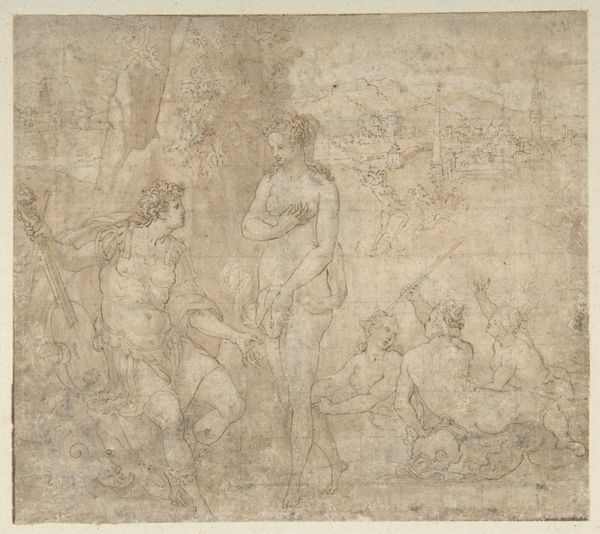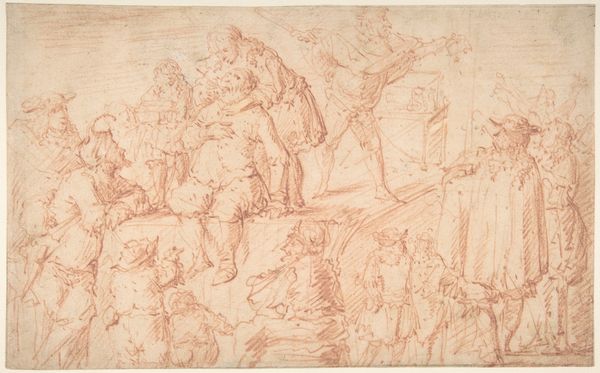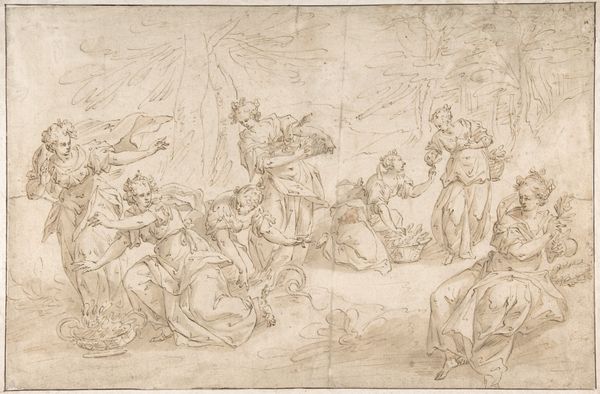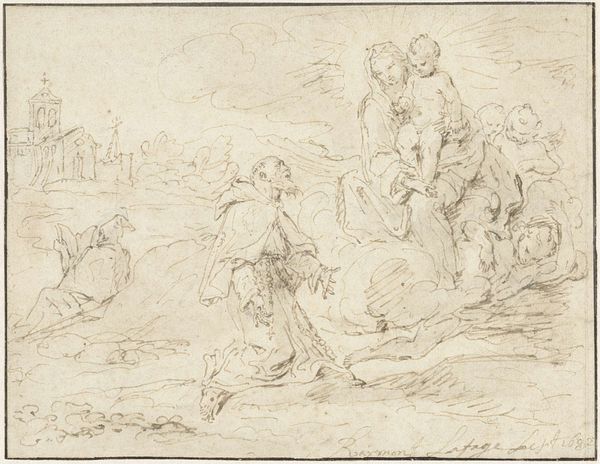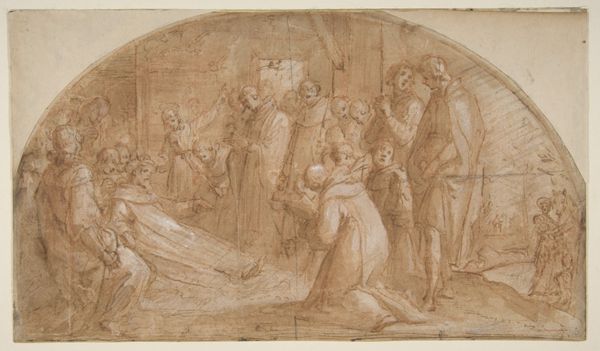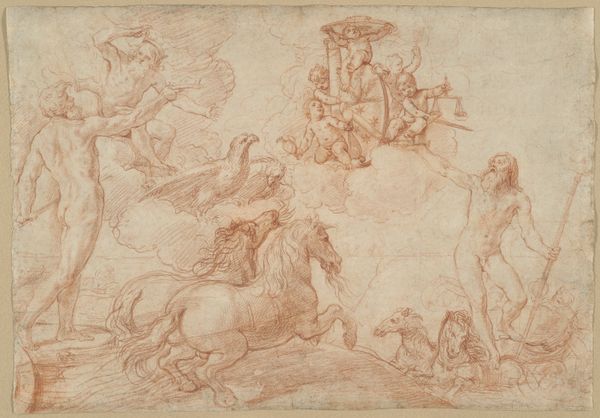
drawing, print, paper, ink, pencil, pen, charcoal
#
drawing
#
medieval
#
baroque
# print
#
human-figures
#
landscape
#
charcoal drawing
#
figuration
#
paper
#
ink
#
pencil
#
pen
#
genre-painting
#
charcoal
#
history-painting
Dimensions: 7 1/2 x 10 9/16 in. (19.1 x 26.8 cm)
Copyright: Public Domain
Curator: Ah, this drawing practically vibrates with Baroque energy. It's called "The Adoration of the Shepherds," a 17th-century work currently residing at the Metropolitan Museum of Art. Look at that dynamic composition. Editor: It has an almost frenzied quality to it. A controlled chaos, maybe? It's executed with pen, ink, and charcoal, mostly in sanguine tones on paper. But its frenetic mark-making strikes me first. Curator: Precisely! The artist captures this pivotal, holy scene with such an expressive urgency. The composition teeters between raw sketch and masterful orchestration. There's this beautiful contrast between the tender figures surrounding the newborn and the bustling energy of the rest of the gathering. Editor: It speaks to a deep-seated human need for communal experiences. If we situate the nativity within histories of displacement, as bell hooks would, how might we reconsider notions of home? Where are we made welcome, and by whom? Even if there were class divides amongst those gathered for this scene of adoration, perhaps the experience brought some shared recognition of struggle. Curator: Oh, that's a fascinating reading, seeing it as a convergence despite divisions. I also find myself drawn to the use of line here; they aren't merely outlines, they’re filled with such incredible emotional intensity. Some lines feel rushed, as if the artist were desperate to capture the very essence of the scene before it vanished. Editor: Indeed. But there's also a deliberate vulnerability. The rawness prevents the scene from becoming overly idealized, locating its emotional center in our own imperfections. This may offer a space of critical reflexivity for folks in contemporary society seeking to find shared ethical ground. Curator: Absolutely! In its raw energy, the work transcends a mere historical depiction, and enters the realm of genuine human emotion and lived experience. That tension, that push and pull between chaos and divinity, I think, is what makes this drawing so captivating centuries later. Editor: It truly compels us to ask difficult, urgent questions about ourselves, especially when seeking mutual flourishing and accountability. And perhaps it offers, as does art in its myriad forms, something more, something deeper than a concrete answer, in the possibilities that are opened in the experience of contemplation.
Comments
No comments
Be the first to comment and join the conversation on the ultimate creative platform.
